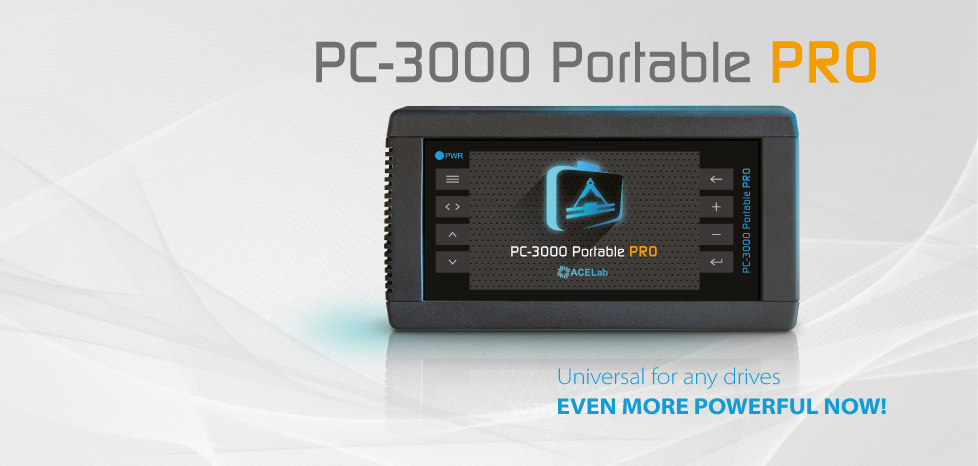
Imagine losing years of precious photos, critical work documents, or irreplaceable business data to a failed hard drive. The panic sets in, but then you hear about a tool that can bring your data back from the brink: the PC-3000. Developed by ACE Lab, the PC-3000 stands as a beacon of hope in the data recovery industry. This hardware-software solution tackles the toughest data loss scenarios, from physically damaged drives to complex firmware issues. In this article, we’ll dive into why the PC-3000 reigns supreme, exploring its features, applications, and the expertise required to wield it effectively.
What Makes the PC-3000 a Game-Changer?
The PC-3000 isn’t just another tool; it’s a comprehensive system designed to recover data from virtually any storage device. Whether it’s a traditional hard disk drive (HDD), a solid-state drive (SSD), or even a RAID array, this tool handles it all. For example, ACE Lab’s PC-3000 Portable PRO can recover data from SATA, PATA, USB HDDs, SAS drives, and even cutting-edge PCIe NVMe SSDs used in modern MacBooks. This versatility sets it apart in a field where specialized tools often dominate.
Moreover, the PC-3000 combines hardware and software to diagnose and repair drives at a low level. It communicates directly with a drive’s firmware, accessing areas that standard recovery software can’t touch. As a result, professionals can revive drives that seem completely dead, extracting data that would otherwise be lost forever.
A Closer Look at PC-3000’s Capabilities
To understand why the PC-3000 is so revered, let’s break down its key features. These capabilities make it a must-have for data recovery experts.
Firmware Repair and Diagnosis
One of the PC-3000’s standout features is its ability to repair corrupted firmware. Firmware is the internal software that controls a drive’s operations. When it fails, the drive becomes inaccessible. The PC-3000 uses vendor-specific utilities to diagnose and fix these issues. For instance, it can regenerate a drive’s translator module, which maps logical data to physical locations, restoring access to user data.
Support for Diverse Storage Devices
The PC-3000 doesn’t discriminate between storage types. It supports HDDs from major vendors like Seagate, Western Digital, and Toshiba, as well as SSDs, USB flash drives, and memory cards. Additionally, its RAID recovery capabilities allow technicians to reconstruct data from complex server arrays. This broad compatibility ensures that no matter the device, the PC-3000 has a solution.
Technological Mode Access
Unlike consumer-grade tools, the PC-3000 can switch drives into technological (factory) mode. This mode grants access to internal drive software, enabling deep diagnostics and repairs. For example, if a drive’s magnetic head is damaged, the PC-3000’s “MR-Head Shift” technology can bypass the faulty head, using adjacent heads to recover data. This level of control is unparalleled in the industry.
Advanced Adapters for Modern Devices
The PC-3000 evolves with technology. Its latest iterations, like the PC-3000 Portable PRO, include adapters for modern interfaces such as M.2 PCIe NVMe and CFexpress. These adapters allow technicians to work on cutting-edge SSDs, including those found in Apple MacBooks. Consequently, the tool remains relevant in a rapidly changing tech landscape.
Real-World Applications of the PC-3000
The PC-3000 shines in real-world scenarios, from small repair shops to forensic labs. Let’s explore a few cases where it proves its worth.
Case Study: Reviving a Failed Western Digital Drive
Consider a Western Digital WD1200PB drive that fails to appear in a computer’s BIOS. A technician connects the drive to the PC-3000 UDMA system, runs the universal utility, and discovers corrupted firmware modules. Using the PC-3000’s database, they select and write a matching firmware module, then regenerate the translator. Within hours, the drive is accessible, and the user’s data is recovered. This process, which would be impossible with standard software, showcases the tool’s power.
Forensic Data Extraction
In forensic investigations, the PC-3000 Portable PRO is a game-changer. Its standalone mode allows technicians to create data images without a host computer, preserving evidence integrity. Furthermore, its ability to handle logically damaged NAND flash drives makes it ideal for extracting data from smartphones or USB drives in criminal cases.
RAID Recovery for Businesses
Businesses relying on RAID arrays for data storage often face catastrophic data loss when arrays fail. The PC-3000’s RAID recovery tools can reconstruct arrays, even when multiple drives are damaged. This capability saves companies from costly downtime and data loss, reinforcing the tool’s value in enterprise settings.
The Learning Curve: Mastering the PC-3000
While the PC-3000 is powerful, it’s not a plug-and-play solution. Mastering it requires significant expertise and practice. Here’s why.
Training and Experience
New users often need at least a year to become proficient with the PC-3000. Its interface, while intuitive for professionals, is complex, with hundreds of options and settings. ACE Lab offers training materials and support, but hands-on experience is crucial. Technicians typically practice on non-critical drives to avoid costly mistakes.
Investment in Infrastructure
Using the PC-3000 effectively often requires additional equipment, such as cleanroom facilities for physical repairs or donor drives for head swaps. For instance, a cleanroom is essential when opening a drive to replace damaged components, as dust can destroy sensitive platters. This infrastructure adds to the cost but is necessary for advanced recoveries.
Continuous Updates
The data recovery field evolves rapidly, and ACE Lab keeps the PC-3000 up to date with regular software updates. These updates address new drive models and emerging issues, such as Seagate’s 7200.11 firmware problems. However, staying current requires ongoing investment, as updates sometimes come with additional fees.
Why the PC-3000 Stands Above the Rest
Several tools compete in the data recovery space, but none match the PC-3000’s combination of versatility, depth, and reliability. For example, RapidSpar is a more affordable option for beginners, but it lacks the PC-3000’s advanced firmware repair capabilities. Similarly, DeepSpar’s Disk Imager excels at imaging damaged drives but doesn’t offer the same low-level access.
Additionally, the PC-3000’s global adoption speaks volumes. Over 15,000 data recovery professionals worldwide rely on it, and its reputation is bolstered by endorsements from industry leaders like $300 Data Recovery, which uses it for complex cases. This widespread trust underscores its status as the gold standard.
Challenges and Considerations
Despite its strengths, the PC-3000 isn’t without challenges. Its high cost—often $10,000 or more for the Portable PRO—makes it a significant investment. Small businesses may struggle to justify the expense unless they handle frequent recovery jobs. Furthermore, the tool’s complexity means it’s not suitable for casual users or hobbyists.
Another consideration is the need for ongoing support. While ACE Lab provides decent technical support, some users report frustration with update policies or delays in addressing new drive issues. Nevertheless, the tool’s benefits far outweigh these drawbacks for dedicated professionals.
The Future of Data Recovery with PC-3000
Looking ahead, the PC-3000 is poised to remain a leader in data recovery. As storage technologies evolve, ACE Lab continues to innovate. The recent introduction of the PC-3000 Portable PRO, with support for PCIe SSDs and standalone operation, demonstrates their commitment to staying ahead. Moreover, the tool’s forensic applications are likely to grow as digital evidence becomes increasingly critical in legal cases.
For businesses and individuals, the PC-3000 offers peace of mind. Knowing that a tool exists to recover data from even the most damaged devices is reassuring in an era of growing data dependence. As we move forward, the PC-3000 will likely continue to set the standard for what’s possible in data recovery.
To Conclude
In closing, the PC-3000 stands as the ultimate tool in the data recovery industry, blending cutting-edge technology with unmatched versatility. Its ability to tackle everything from firmware corruption to RAID failures makes it indispensable for professionals. While it demands expertise and investment, the results—recovered data, saved businesses, and preserved memories—are worth it. As we’ve seen, the PC-3000 isn’t just a tool; it’s a lifeline for data in distress.

Leave a Reply